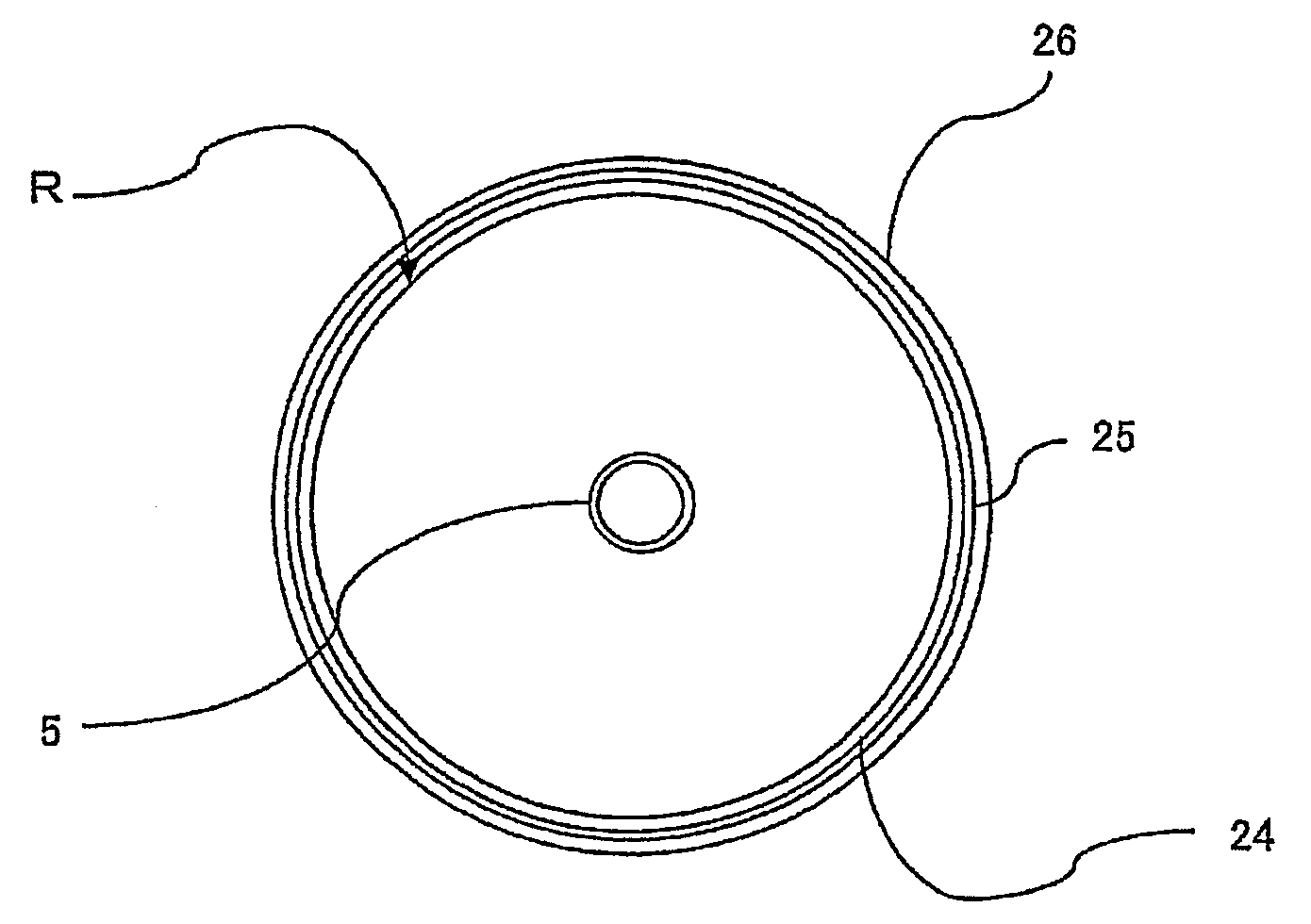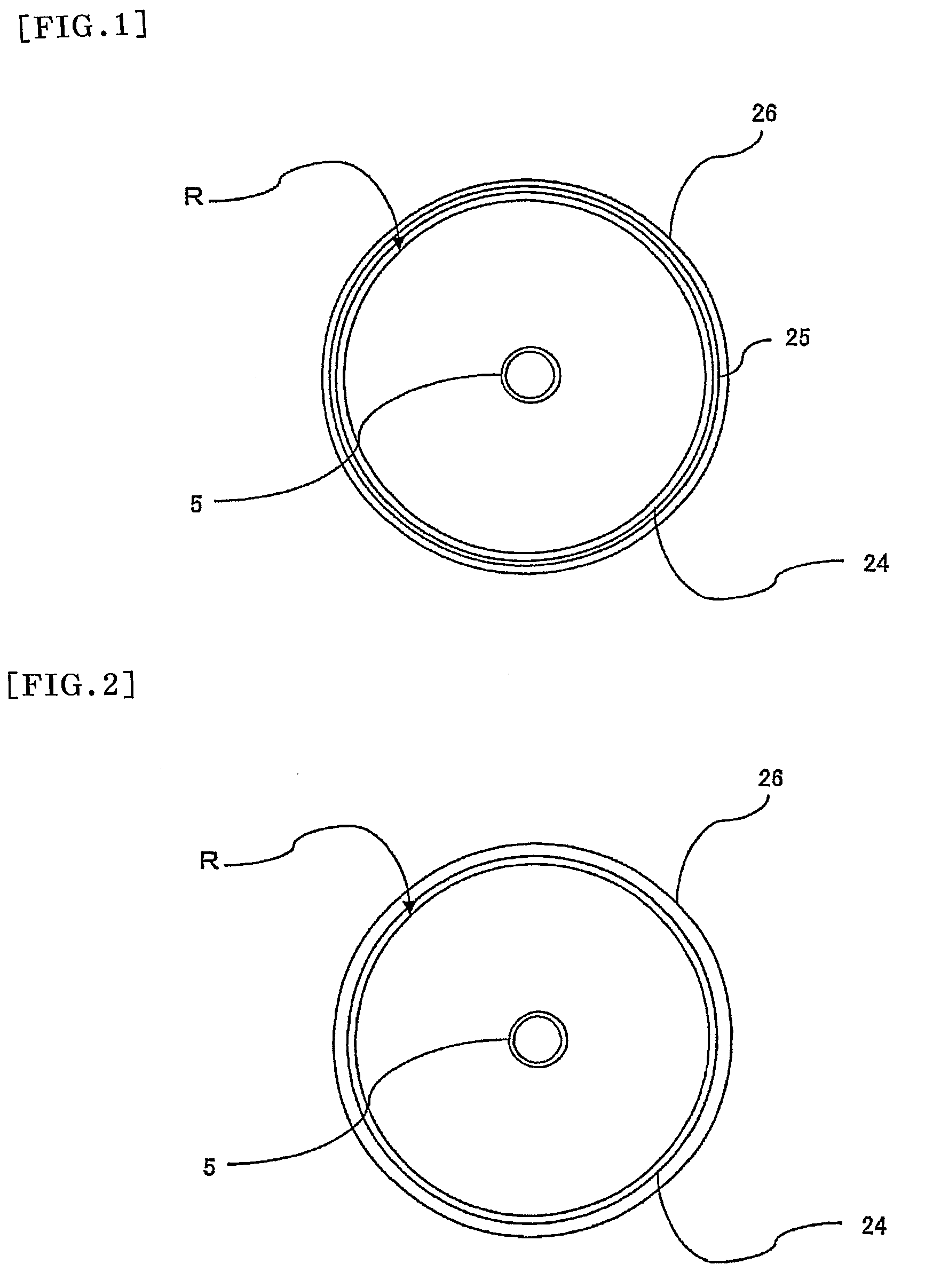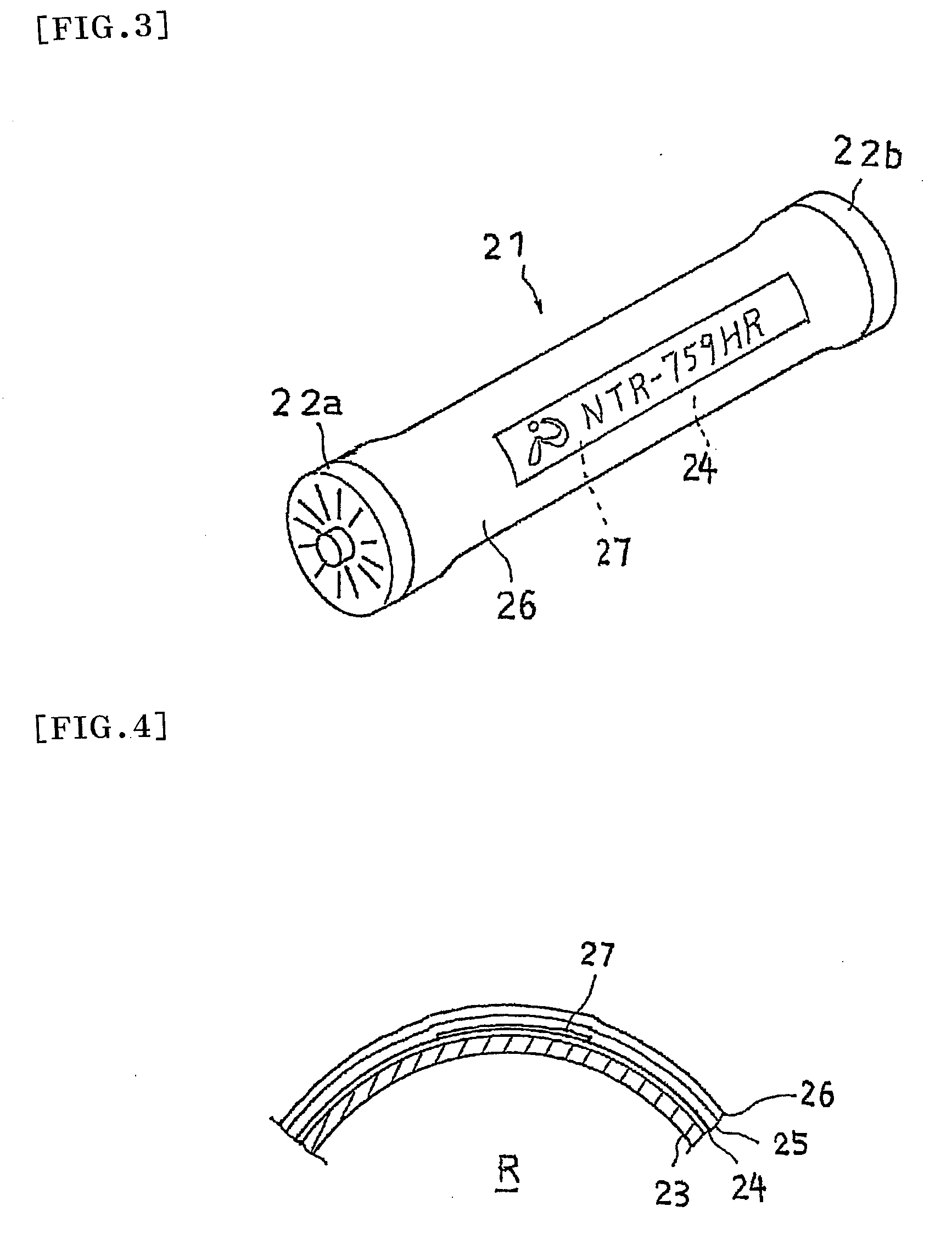Spiral membrane element
a membrane element and spiral technology, applied in the direction of moving filter element filters, filtration separation, separation processes, etc., can solve the problems of increasing the winding angle of the glass roving, increasing the outer diameter near the end part of the membrane element, increasing the outer diameter, etc., to achieve the effect of preventing cracks, improving barrier properties, and reducing the number of cracks
- Summary
- Abstract
- Description
- Claims
- Application Information
AI Technical Summary
Benefits of technology
Problems solved by technology
Method used
Image
Examples
example 1
[0078]First, a membrane leaf unit made of an RO membrane ES20 manufactured by Nitto Denko Corporation. and a feed-side flow passageway member made of PP and having a thickness of 0.7 mm was prepared. Next, the tip end of the permeate-side flow passageway member made of PET and having a thickness of 0.3 mm was fixed to a hollow center tube made of PPE and having a diameter of 32 mm, and the membrane leaf unit was mounted on the permeate-side flow passageway member while applying a polyurethane resin at the part corresponding to the sealing part. Next, the mounted membrane leaf unit was wound while rotating the hollow center tube around the axis and applying a tension.
[0079]Next, an adhesive tape (having a width of 75 mm) was wound in a coil form without a gap to perform shape retaining, and it was covered with a tubular heat-shrinking film (made of a PP resin, having a thickness of 50 μm, a surface-treated product obtained by a corona treatment), and close adhesion was made by heatin...
example 2
[0083]A spiral membrane element was fabricated under the same condition as in the Example 1 except that a fiber reinforcement layer having a thickness of 2 mm was disposed without disposing a fiber cloth reinforcement layer having a glass cloth as a reinforcing phase. As a result thereof, as compared with a conventional product in which the heat-shrinking film is not disposed, cracks were less liable to occur; however, the visibility and recognizability decreased as compared with the Example 1.
example 3
[0084]After performing the steps up to the sticking of a display label in a similar manner as in the Example 1, about one round of a glass cloth having a thickness of 0.15 mm (manufactured by Nitto Bouseki Co., Ltd., plain weave fabric, having a porosity of 30%) was wound as it was, and the two ends were fixed with a two-sided tape. Onto this, a glass roving impregnated with an epoxy resin (manufactured by Asahi Fiber Glass Co., Ltd.) was wound with a thickness of 1.5 mm, and the resin was hardened at 25° C. to form a fiber cloth reinforcement resin layer and a fiber reinforced plastic layer, thereby to fabricate a spiral membrane element.
[0085]As a result of this, the visibility and recognizability were further improved by penetration of the epoxy resin to the display label surface through the opening of the glass cloth, and the strength was also at a level that does not raise a problem. Also, even if the epoxy resin was not applied to the glass cloth, the resin with which the glas...
PUM
| Property | Measurement | Unit |
|---|---|---|
| porosity | aaaaa | aaaaa |
| winding angle | aaaaa | aaaaa |
| diameter | aaaaa | aaaaa |
Abstract
Description
Claims
Application Information
 Login to View More
Login to View More - R&D
- Intellectual Property
- Life Sciences
- Materials
- Tech Scout
- Unparalleled Data Quality
- Higher Quality Content
- 60% Fewer Hallucinations
Browse by: Latest US Patents, China's latest patents, Technical Efficacy Thesaurus, Application Domain, Technology Topic, Popular Technical Reports.
© 2025 PatSnap. All rights reserved.Legal|Privacy policy|Modern Slavery Act Transparency Statement|Sitemap|About US| Contact US: help@patsnap.com



